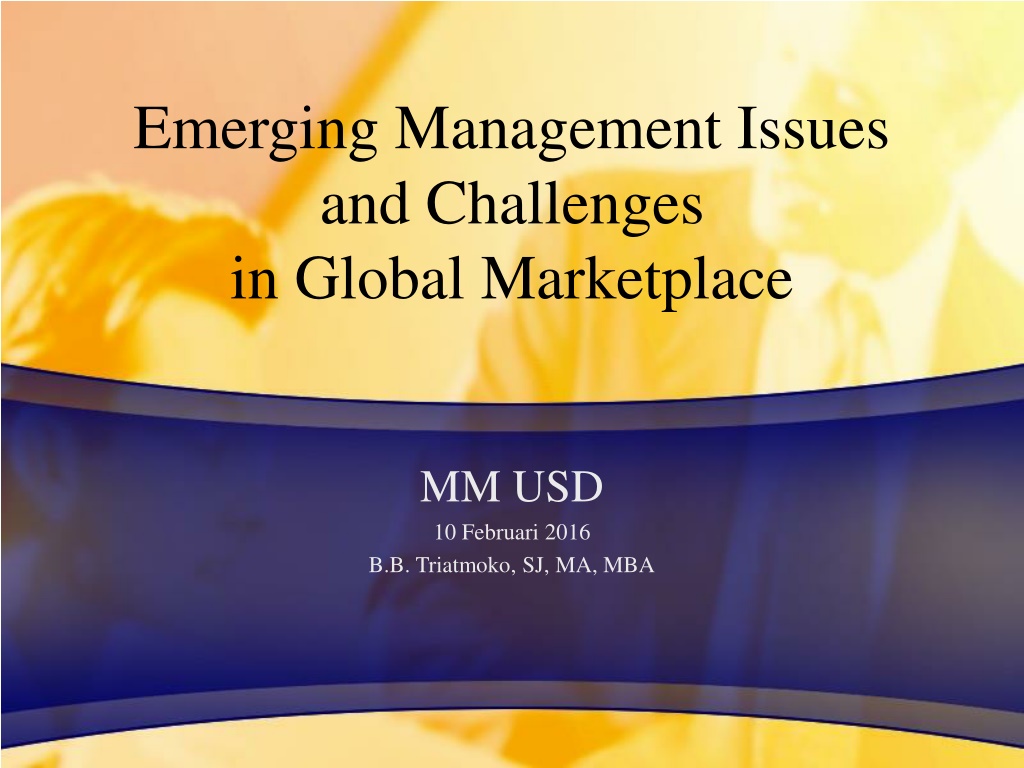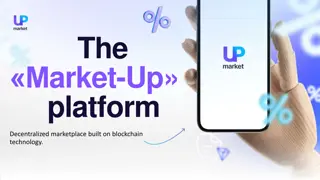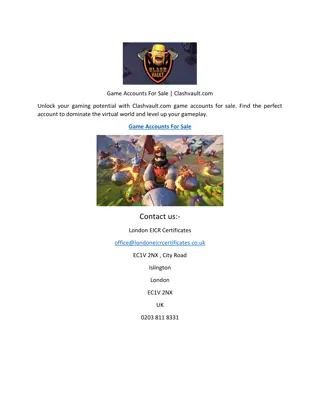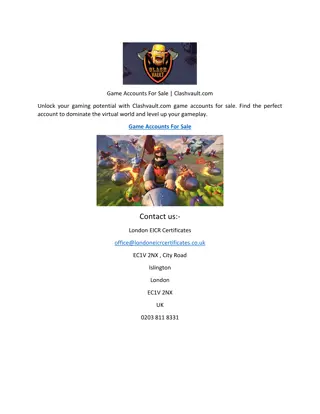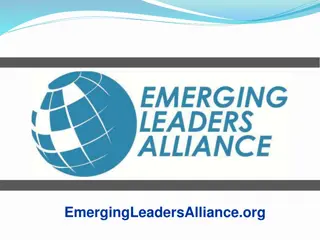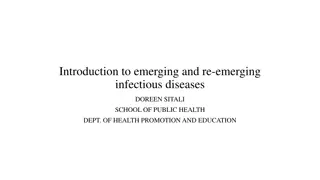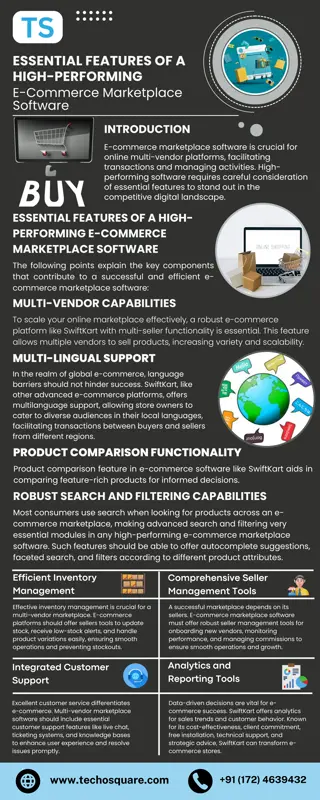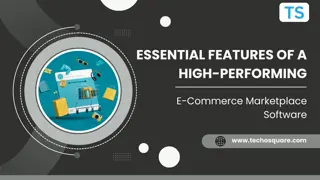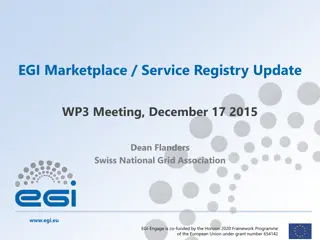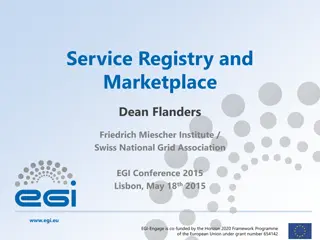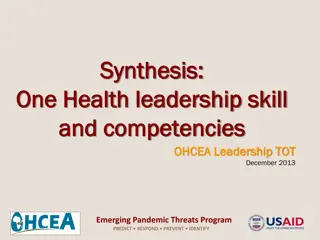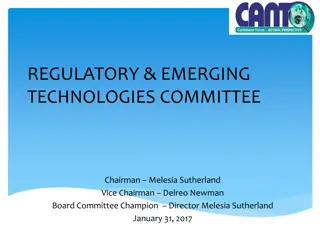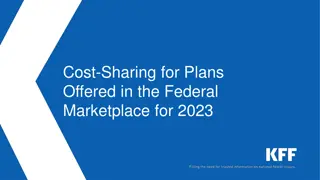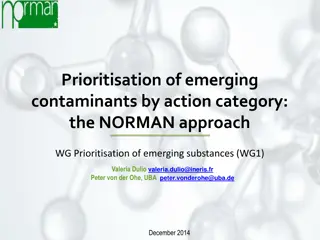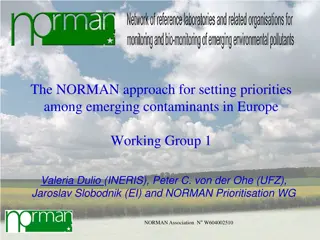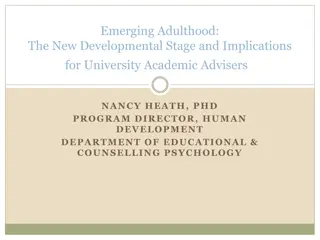Emerging Management Challenges in Global Marketplace
Sebagai respons terhadap ketidakpastian global paska krisis keuangan 2008, organisasi harus mengembangkan manajemen yang kuat untuk menghadapi tantangan masa depan. Globalisasi menciptakan fragilitas yang terkait, menurunkan volatilitas, dan menimbulkan Black Swans. Kompetisi global mendorong perubahan dalam fokus strategi bisnis, dengan manajer senior diharapkan menjadi inisiator perubahan.
Download Presentation

Please find below an Image/Link to download the presentation.
The content on the website is provided AS IS for your information and personal use only. It may not be sold, licensed, or shared on other websites without obtaining consent from the author.If you encounter any issues during the download, it is possible that the publisher has removed the file from their server.
You are allowed to download the files provided on this website for personal or commercial use, subject to the condition that they are used lawfully. All files are the property of their respective owners.
The content on the website is provided AS IS for your information and personal use only. It may not be sold, licensed, or shared on other websites without obtaining consent from the author.
E N D
Presentation Transcript
Emerging Management Issues and Challenges in Global Marketplace MM USD 10 Februari 2016 B.B. Triatmoko, SJ, MA, MBA
Emerging Management Challenges Effects of Globalization Black Swan Event vs Predictability Knowledge Based Management Ethics and Social Responsibility Development of Environment Empowerment of Employees
Executive Summary Semenjak krisis keuangan global di tahun 2008, semakin disadari bahwa kita tidak bisa memprediksi masa depan dan tantangannya, oleh karena itu kita harus mampu mengembangkan system manajemen organisasi yang siap menghadapi ketidakpastian (robust management) Model organisasi yang akan melahirkan inovasi adalah organisasi yang amat mirip dengan kondisi biologis kita: berskala kecil, secara ekologis (=interaksi) kaya, tidak bermain spekulasi; yang anggotanya bersemangat entrepreneur dan memiliki passion yang tinggi untuk terus mencari peluang.
What is Globalisation? Proses pengembangan jaringan bisnis melampaui batas satu negara Penyebabnya: Semakin meluasnya perkembangan ekonomi berbasis pasar Hilangnya batas-batas perdagangan internasional dan FDI (Foreign Direct Investment) Semakin rendahnya biaya komunikasi dan transportasi
Global Competition forced changes in focus strategy Focus of Business Who is expected to initiate change? senior managers Technology Structure production mechanical hierarchic 1980s serving the customer middle managers electronic teams 1990s speed and profitability of innovation integrated networks 2000s International networks Problem solving innovation 2010 environmental
Effects Globalization creates interlocking fragility, while reducing volatility and giving the appearance of stability. In other words it creates devastating Black Swans. We have never lived before under the threat of a global collapse. Financial institutions have been merging into a smaller number of very large banks. Almost all banks are now interrelated. So the financial ecology is swelling into gigantic, incestuous, bureaucratic banks (often Gaussianized in their risk measurement) when one falls, they all fall. The increase concentration among banks seems to have the effect of making financial crisis less likely, but when they happen they are more global in scale and hit us very hard. We have moved from a diversified ecology of small banks, with varied lending policies, to a more homogenous framework of firms that all resemble one another. True, we now have fewer failures, but when they occur .I shiver at the thought (NNT page 225-226)
Black Swan 3 Komponen 1. First, it is an outlier, as it lies outside the realm of regular expectations, because nothing in the past can convincingly point to its possibility. 2. Second, it carries an extreme 'impact'. 3. Third, in spite of its outlier status, human nature makes us concoct explanations for its occurrence after the fact, making it explainable and predictable.
Examples : Negative Black Swan September 11 2011 terrorist attacks Fukushima Nuclear Power Plant Asteroid impact on earth
Examples : Positive Black Swan Penemuan Personal Computer Lahirnya Internet Penemuan Laser Penemuan Pinicilin Other EUREKA
STRATEGY MENGHADAPI KETIDAKPASTIAN The Great Asymmetry: Put yourself in situations where favorable consequences are much larger than unfavorable ones I will never get to know the unknown since, by definition, it is unknown. However, I can always guess how it might affect me, and I should base my decisions around that. In order to make a decision you need to focus on the consequences (which you can know) rather than the probability (which you can t know) is the central idea of uncertainty
Strategy.. 1. Make a distinction between positive Black Swan and negative one. Learn to distinguish between those human undertakings in which the lack of predictability can be extremely beneficial and those where the failure to understand the future cause harm. Jangan narrow-minded invest in preparedness, not in prediction Seize any opportunity, or anything that looks like opportunity. Remember that positive Black Swans have a necessary first step: you need to be exposed to them. Work hard in chasing such opportunities and maximasing exposure to them. 2. 3.
PERTANYAAN BESAR? MENGAPA KITA TIDAK BISA MEMPREDIKSI BLACK SWAN? JAWABANNYA: EPISTEMIC ARROGANCY INFORMATION NOISE
Heuristic Judgement Heuristic adalah prosedur sederhana yang membantu benak kita untuk menemukan jawaban yang memadai untuk pertanyaan-pertanyaan sulit, meskipun tidak sempurna. Cara yang paling umum adalah dengan subsitusi. Cara itu sering kali efektif, namun kadang kala juga membawa kepada kesimpulan yang salah, dan bahkan tanpa disadari sebenarnya kita tidak menjawab pertanyaan yang diajukan. Essensi: Ketika kita dihadapkan pada pertanyaan sulit, kita sering menjawab yang lebih mudah, biasanya tanpa kita sadar bahwa kita sudah menggunakan subsitusi
Contoh TARGET QUESTION - Seberapa besar kamu akan berkontribusi untuk melindungi satwa langka? - Seberapa bahagia kamu dalam hidupmu akhir-akhir ini? - Seberapa popular presiden Jokowi dalam enam bulan dari sekarang? HEURISTIC QUESTION - Seberapa besar perasaanmu terlibat ketika memikirkan lumba-lumba yang sekarat? - Bagaimana mood mu sekarang? - Seberapa popular presiden Jokowi sekarang ini?
Dua Agen pengambil keputusan di benak kita (System 1 & System 2) System 1: bekerja secara otomatis dan cepat, dengan sedikit atau bahkan tanpa perlu usaha dan tidak ada kendali kehendak System 2: agen ini mengarahkan perhatian pada kerja mental yang menuntutnya, termasuk perhitungan yang kompleks. Pekerjaan system 2 sering diasosiasikan dengan pengalaman subyektif, pilihan dan konsentrasi
Ketika kita berpikir tentang diri kita, kita mengidentifikasi diri dengan System 2, diri yang sadar dan bernalar, yang memiliki nilai-nilai, pilihan- pilihan dan memutuskan apa yang harus dipikirkan dan diperbuat. Meskipun System 2 meyakini bahwa dirinya yang menentukan tindakan, akan tetapi sebenarnya System 1 yang bertindak secara otomatis. Operasi otomatis System 1 menghasilkan pola-pola ide yang luar biasa kompleks, akan tetapi hanya System 2 yang lebih lambat yang bisa mengkonstruksi pikiran-pikiran melalui tahap-tahap yang teratur.
Information vs Knowledge The more information you give someone, the more hypotheses they will formulate along the way, and the worse off they will be. They see more random noise and mistake it for information (fire hydrant experiement) The problem is that our ideas are sticky: once we produce a theory, we are not likely to change our minds so those who delay developing their theories are better off. When you develop your opinions on the basis of weak evidence, you will have difficulty interpreting subsequent information that contradicts these opinions, even if this new information is obviously more accurate. Information proved to be toxic. More is sometimes, but not always, better.
KNOWLEDGE MANAGEMENT Knowledge management (KM) is the process of capturing, developing, sharing, and effectively using organizational knowledge. It refers to a multi-disciplinary approach to achieving organizational objectives by making the best use of knowledge.
Different focuses Techno-centric with a focus on technology, ideally those that enhance knowledge sharing and creation. Organisational with a focus on how an organisation can be designed to facilitate knowledge processes best. Ecological with a focus on the interaction of people, identity, knowledge, and environmental factors as a complex adaptive system akin to a natural ecosystem.
Typical considerations driving a KM effort: Making available increased knowledge content in the development and provision of products and services Achieving shorter new product development cycles Facilitating and managing innovation and organisational learning Leveraging the expertise of people across the organisation Increasing network connectivity between internal and external individuals Managing business environments and allowing employees to obtain relevant insights and ideas appropriate to their work Solving intractable or wicked problems Managing intellectual capital and intellectual assets in the workforce (such as the expertise and know-how possessed by key individuals or stored in repositories)
KM Technology 1. Groupware Groupware refers to technologies that facilitate collaboration and sharing of organizational information. One of the earliest very successful products in this category was Lotus Notes. 2. Workflow Workflow tools allow the representation of processes associated with the creation, use, and maintenance of organizational knowledge. For example the process to create and utilize forms and documents within an organization. 3. Content/Document Management Content/Document Management systems are systems designed to automate the process of creating web content and/or documents within an organization. 4. Enterprise Portals Enterprise Portals are web sites that aggregate information across the entire organization or for groups within the organization such as project teams. 5. eLearning eLearning technology enables organizations to create customized training and education software. Scheduling and planning
KM Technology 1. Scheduling and planning tools automate the creation and maintenance of an organization's schedule: scheduling meetings,notifying people of a meeting, etc. 1. Telepresence Telepresence technology enables individuals to have virtual meetings rather than having to be in the same place. Videoconferencing is the most obvious example.
The Extreme Future The Innovation Economy: IT and Network, Biotech, Nanotech, and Neurotech The Future of the Workforce should not be defined by geography, but by talent. A global war for talent will be the top driver of competitive advantage. Cultures in Collision: extremists and terrorists Climate change is real and it is here now. It cannot be fixed fast enough.
